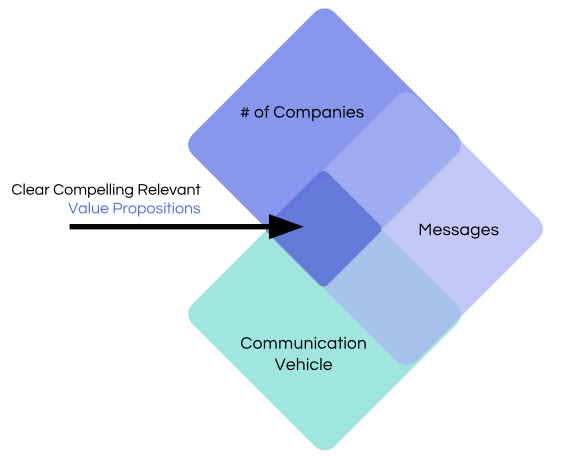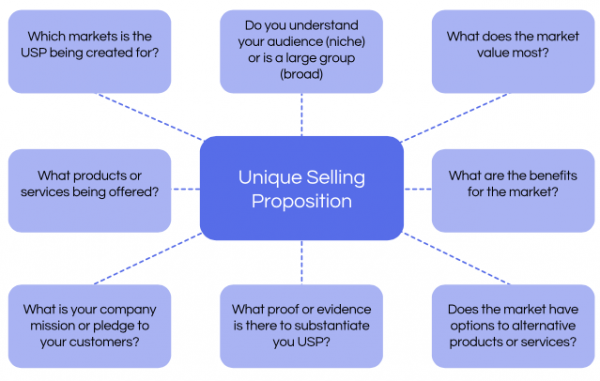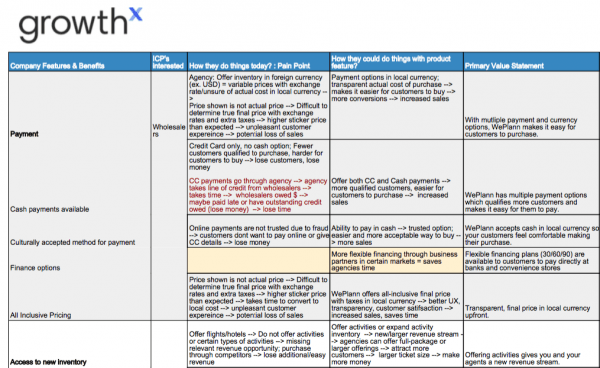As I mentioned in previous post, the path to product-market fit is a formula — one that I’m sharing with you here on the blog. I’ve touched on the first two phases, resources review and market discovery, but I’d like to go in-depth on the third phase, market messaging. This is the last part of laying the foundation for your market execution, which I’ll be covering in future posts.
Related: Using Sales Conversations to Find Product-Market-Fit
What Is Market Messaging?
The right market messaging will allow you to convert new customers, as well as reinforce to your existing customers that they’ve made the right choices. Effective market messaging is based on understanding who your customer is, how your product or service benefits them, and how your company delivers value.
Customer Interviews
In order to deliver the right market messaging, you need to understand your customers. To do that, start with detailed interviews with current customers, to help you understand both why they bought your product, and how your company is different than others that offer competitive products. Focus on your customer’s buying journey — how they eventually decided on your product — as well as their actual experiences with your product.
Outcome:
- Understand how existing customers view the value of the product.
- Understand what features or benefits customers value the most.
- Begin crafting market messaging hypothesis.
UVP & USP
The next step is developing your unique value proposition (UVP) and a unique selling proposition (USP). Think of USP as what your product does, and UVP as what it does for someone. A quarter-inch drill bit drills quarter-inch holes — that’s USP. It allows me to make my wife happy by hanging a picture on the wall — that’s UVP.
Your UVP is what you do for your customers. A unique value proposition is a clear statement of the tangible results a customer gets from using your products or services. For each of your ideal customer profiles (ICP), you’ll develop a UVP that clarifies what value your product delivers, and how that differs from your competition. For example:
- Whole Foods: The groceries may cost a lot, but the value of being healthy outweighs the cost.
- Zappos.com: The world’s largest shoe store delivered to your door with free shipping both ways.

A unique selling proposition is what your product does and how it is different from your competitors’ products. The selling proposition is a promise of value to be delivered and a belief from the customer that value will be experienced.
That’s how you create competitive differentiation.

Examples of USP include:
- Specialization: We specialize in working with financial institutions.
- Guarantee: We guarantee service in 4 hours or your money back.
- Methodology: We use a unique tool called SureFire! to analyze your critical needs.
Outcomes:
- Create a market messaging map, with specific messaging for each USP & USV for each ICP by channel and format.
- Review and update as needed.

Above: A market messaging map, which details channel-specific messaging for each ICP and USP/USV
Developing an Initial Attraction Framework
Grabbing new customers requires a separate strategy to generate interest and a desire to want to learn more about your product. To start, generate a list of your product’s top features and benefits. Consider your ICP’s current situation and pain points without specific features or benefits. Based on what you’ve learned so far, hypothesize your ICP’s future situation with specific features and benefits. From there, you can begin to craft your core messaging.
Outcomes:
- Develop list of targeted and well-crafted marketing copy for every feature.
- Review and update as needed.



